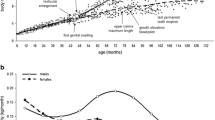Abstract
The hair length of Japanese monkeys was investigated for a period of one year and the molting phenomenon was clarified. Nine monkeys were employed in the study. The molting of the Japanese monkey was found to be of a seasonal type and occurred once during the year. The molting continued for one to four months in each monkey. The hair of the Japanese monkeys was wholly replaced during the period from April to August. The hair length was thus short in summer, and long in winter. Hair replacement in pregnant females began after parturition and was generally later than that in other individuals. During molting, both new and old hairs could be observed simultaneously in the same region of the body. The hair replacement ended around summer when the hair became the shortest. The new hairs continued to grow after molting and became the longest towards autumn or winter. Thus, the summer coat and the winter coat were essentially the same in the Japanese monkey. Such annual changes in the hair of the Japanese monkey were considered to be suitable for the climate of Japan.
Similar content being viewed by others
References
Dwyer, P. D., 1963. Seasonal changes in pelage ofMiniopterus schreibersi blepotis (Chiroptera) in north-eastern New South Wales.Austral. J. Zool., 11: 290–300.
Inagaki, H., 1985. A preliminary study on hair length in the Japanese monkey (Macaca fuscata fuscata).Primates, 26: 334–338.
, 1986. Morphological characteristics of the hair of Japanese monkeys (Macaca fuscata fuscata): length, diameter, and shape in cross-section, and arrangement of the medulla.Primates, 27: 115–123.
&Y. Hamada, 1985. Differences in hair density of Japanese monkey (Macaca fuscata fuscata) with locality and age.Primates, 26: 85–90.
Izawa, K., 1985.Yasei ni Kiku. Komichishobo, Tokyo. (in Japanese)
Ling, J. K., 1970. Pelage and molting in wild mammals with special reference to aquatic forms.Quart. Rev. Biol., 45: 16–54.
Lyman, C. P., 1943. Control of coat color in the varying hareLepus americanus.Erxleben. Bull. Museum Comp. Zool. Harvard, 93: 193–461. (Reviewed byLing, J. K., 1970)
Meteorological Agency, 1982.Climatic Table of Japan, Part 2, Monthly Normals by Stations 1951–1980. Meteorological Agency, Tokyo. (in Japanese)
Negus, N. C., 1958. Pelage stages in the cotton tail rabbit.J. Mammal., 39: 246–252.
Ryder, M. L., 1973.Hair. Edward Arnold, London.
Spinner, G. P., 1940. Molting characteristics in the eastern cotton tail rabbits.J. Mammal., 21: 429–434.
Stodart, E., 1965. A study of the biology of the wild rabbit in climatically different regions in eastern Australia: seasonal changes in the pelt.C.S.I.R.O. Wild. Res., 10: 33–72.
Author information
Authors and Affiliations
About this article
Cite this article
Inagaki, H., Nigi, H. Annual changes in hair length of the Japanese monkey (Macaca fuscata fuscata). Primates 29, 81–89 (1988). https://doi.org/10.1007/BF02380851
Received:
Accepted:
Issue Date:
DOI: https://doi.org/10.1007/BF02380851




